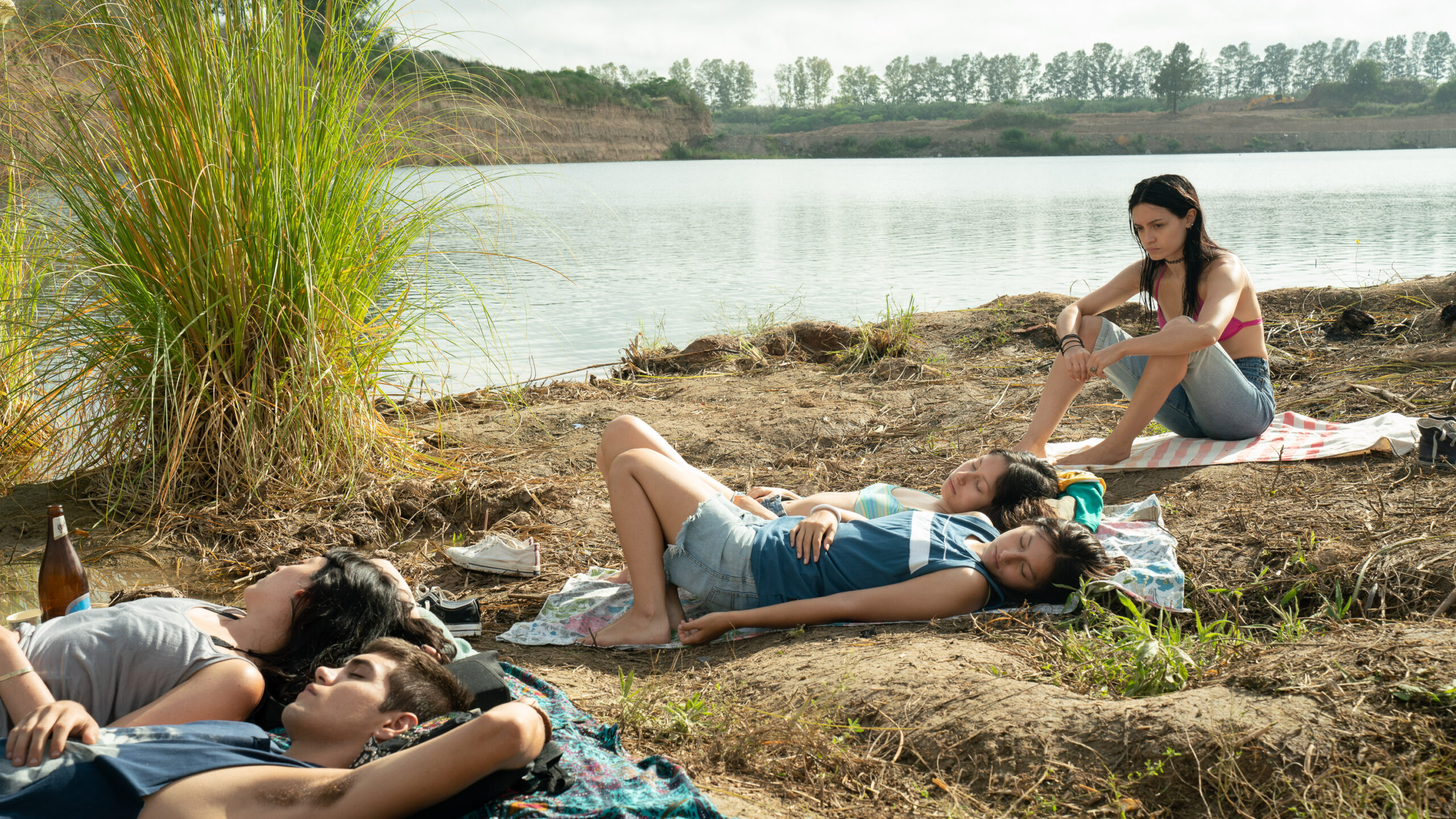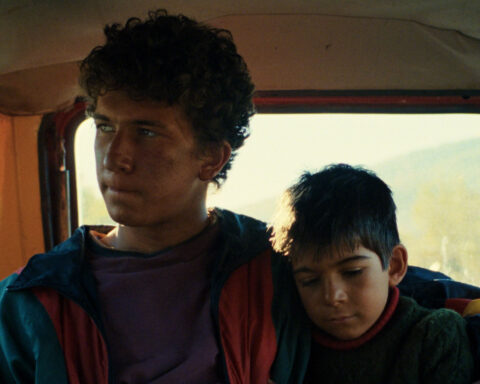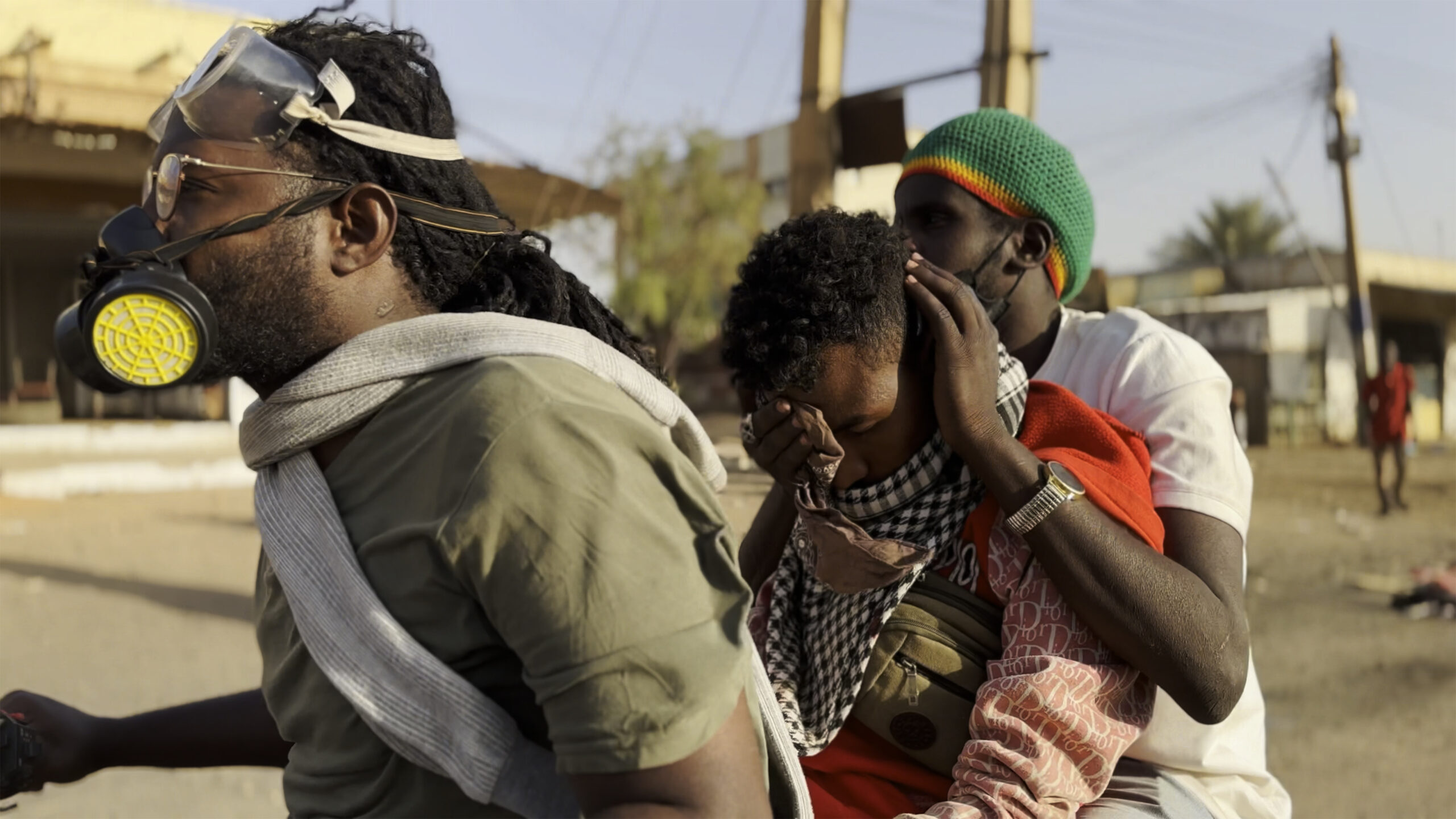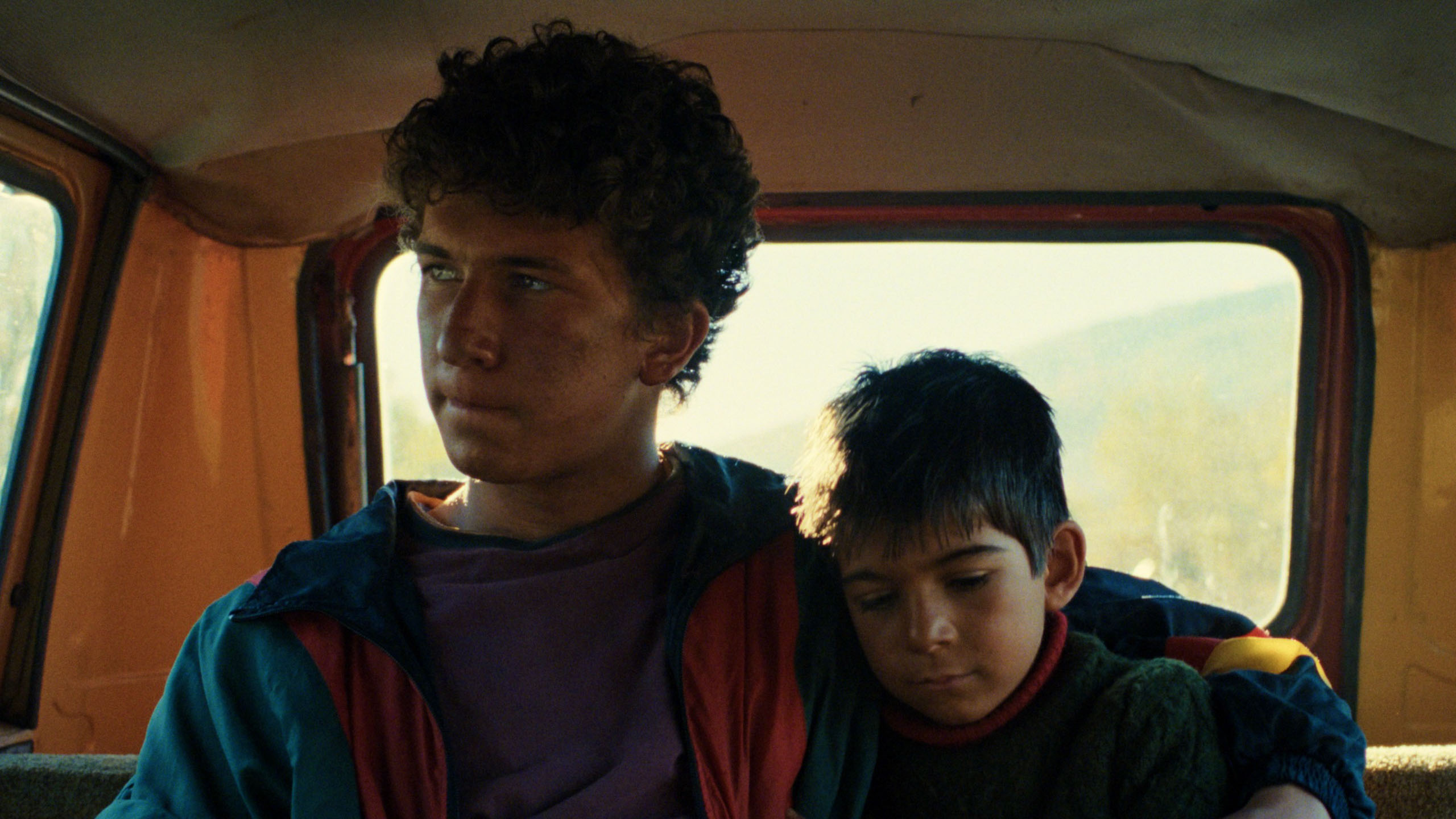A coming-of-age drama, often filled with instances of teen rebellion and exploring the tumultuous range of emotions associated with sexual awakening defines a pivotal period of transition and self-discovery. But when one mixes horror into this genre, a unique and often unsettling blend emerges, where the fears of the unknown external world mirror the internal turmoil of growing up. With The Virgin of the Quarry Lake, adapted from the fiction of Mariana Enriquez, director Laura Casabé carefully explores this intersection. She weaves a slow-burn teenage drama with local lore, capturing the anxieties of adolescence and mirroring the internal turmoil of growing up with the terrors of the uncharted territory beyond.
The Virgin of the Quarry Lake is set in a Buenos Aires neighbourhood during the 2001 crisis. Natalia, a reserved teenager, lives with her grandmother in a suburb and her carefree life revolves around chatting online with her group of female friends and Diego, the object of her affection. Unburdened by life’s harsh realities, she spends her days with friends. They smoke, swim, and attend underground parties. But this sheltered life is disrupted when Silvia, an older woman, forges a close friendship with Diego. As their bond deepens, Silvia takes Diego, Natalia, and her two friends to a quarry steeped in dark folklore. Jealousy soon simmers among Natalia and her friends, threatening to ignite a volatile confrontation that will expose hidden resentments and long-buried secrets.
As the film begins, a homeless man is brutally beaten for relieving himself in the neighborhood. Natalia witnesses this horrific act and begs her grandmother to intervene. From the outset, the film warns us that any disruption to the seemingly balanced and peaceful community will be met with severe consequences. Similarly, Silvia’s entry into the life of Natalia and her movements in getting close to Diego foreshadow a similar disruption, hinting at the potential for conflict and jealousy to erupt. While some films prioritize delivering clear-cut moral messages, others, like The Virgin of the Quarry Lake, trust their audience to grapple with complex themes. Its strength lies not in taking a neutral or amoral position, but in daringly exploring the oppressor’s point of view. This bold choice, far from oversimplifying the issue of economic inequality, allows for a richer and more nuanced understanding It crafts a fictionalized scenario that, despite being rooted in real social discomfort, should not be mistaken for a realistic portrayal though it resonates deeply with cultural references, and it’s precisely this rawness that attracts the most attention. The narrative is shrouded in a dark, ominous mood that intensifies as the plot unfolds. It gradually unravels like a mystery, with tiny hints leading to significant revelations about the characters’ pasts. What once seemed puzzling or unclear eventually falls into place, offering a jarring and unexpected clarity about their motivations.
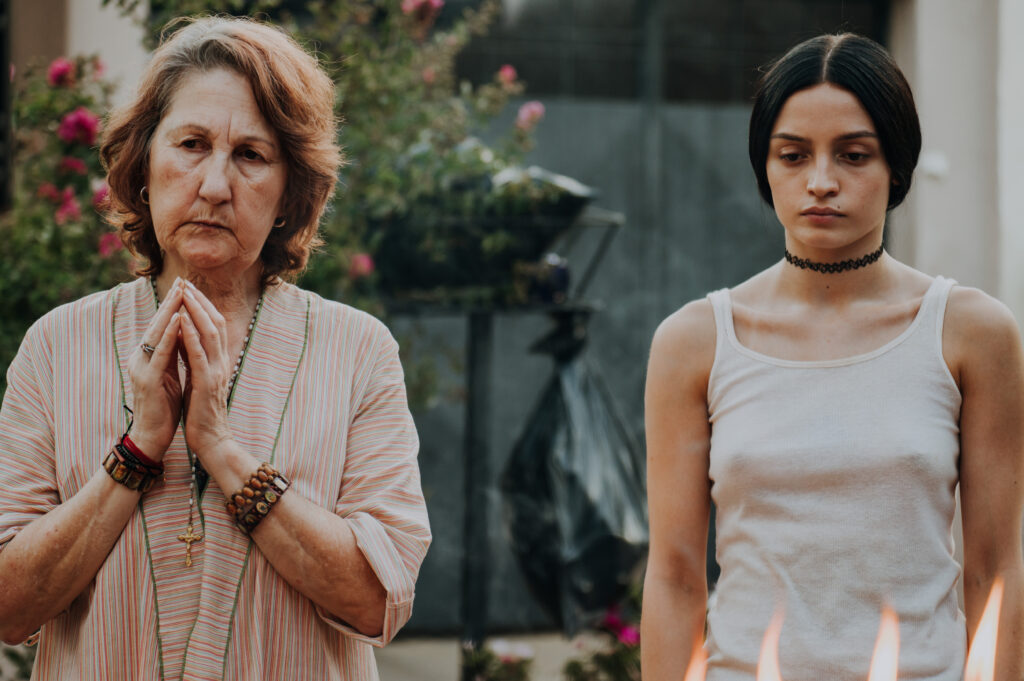
The Virgin of the Quarry Lake also explores societal collapse, though through a more intimate lens, where Casabé’s film paints a portrait of a community wracked by power outages, water shortages, and governmental neglect and there is frustration amongst citizens due to a shared anxiety and hopelessness. This pervasive sense of isolation and desperation shapes Natalia’s worldview, which gradually mirrors the disillusionment of the adults around her. The film uses violence in a way that feels both deliberate and unavoidable. While we often recoil from violence in storytelling, the setting in this film reflects a harsh truth about contemporary society: anger is a natural response, and blunt, impulsive actions have become almost commonplace. Yet as the narrative progresses, the violence shifts from being reactive to intentional, with the display of mystical acts revealing a pattern of control and power. The final scene introduces a deeper emotional dimension, showing that even when violence is portrayed as a last resort, there’s a chilling undercurrent. The characters who witness it suggest an unsettling capacity for more, and it’s in these unspoken, unseen acts that the true terror of the film lies.
The tone is enhanced by the simple yet highly effective camera work. Casabé and her cinematographer, Diego Tenorio Hernández, build an intense, almost suffocating tension in every moment of the film. The unsettling narrative is perfectly complemented by the eerie style of filmmaking, which captures the frantic turmoil of each scene with a haunting sense of stillness. The film’s vibrant visual contrasts tell a unique story, one that is both varied and visceral in its impact. The conviction of the cast, admirably led by Dolores Oliverio as Natalia is striking. Her portrayal of Natalia imbues the character with a mystic, fragile beauty that underscores the vulnerability of youth on the cusp of adulthood.
The Virgin of the Quarry Lake commands our attention and leaves us with an ending that lingers long after the credits have rolled. If we are open to its distinct tone, it will resonate with us viscerally. The film might even make us think twice about the seemingly tranquil, controlled world it depicts.

